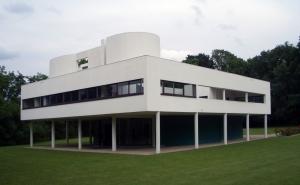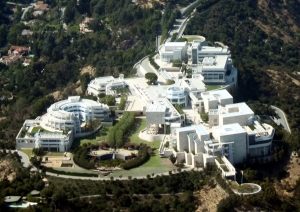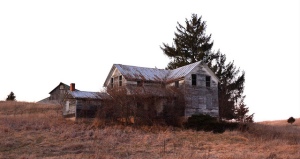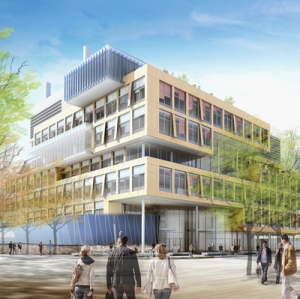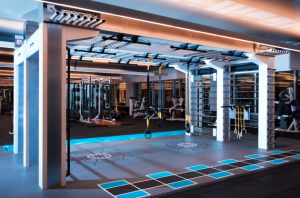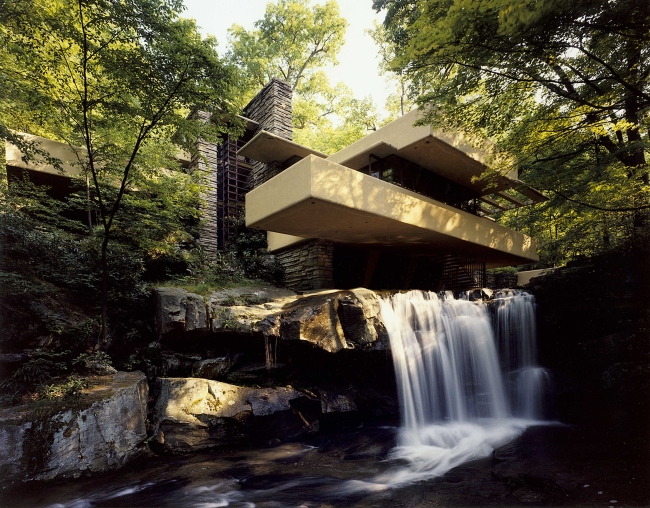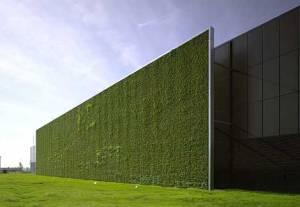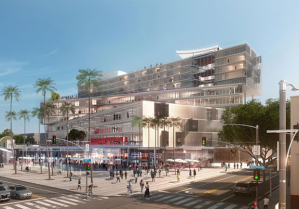Time based model of culture and BIM
Duration of events such as how long it takes to eat breakfast, find a hotel, read a book or watch a movie serves as an indicator of culture. Some movies take years of reading to understand, some meals take lifetimes of home investing to appreciate and understand. Some hotels are enjoyed as key life changing events unfold. How long does it take to greet the day in Arabic, to prepare the garden in English, to walk outside in American or to walk together in Mexico. Our walls, trees, windows, furniture and floors physically, chemically, socially, linguistically and culturally have differing durations of period, decay, surrounding, pronunciation and situation.

The cellphone user and the sky rise
People have always been building things for peoples’ needs. Presumably the first fork did not fit everyone’s hand and multiple forks were made before today’s common fork was formed, its form, its material, and its life span. Product developers know that some things become unusable for reasons better left unpublicized and products receive a lifespan. Old things can be slippery, not in tune to dining culture, or dangerous to use.
The first computers required a lifelong career in government to be useable. The first personal computers required a Silicon Valley type home with your body and use measured for computing. Now all homes are capable of containing a Silicon family house.
Cellphones were designed with telecom data use habits in mind, often found in office call centers, the fire department, police station, or government agencies. The salesman had to employ the customer in telecom over time in order to sell them a home phone, broadcaster, receiver, and plant in one handheld package.
Like the fork, the cellphone expires and no longer feels as useable in its user’s hand. Like the fork, the cellphone was not first designed for all people. New cellphones work for most people who invested in personal computers and the internet, but they don’t work for anyone else without guidance or instruction.
Today, with UCLA building a nanotechnology research lab to develop lower power use utilities, we have a chance to reinvent the wheel. Computers, cellphones, books, and anything electronic, requiring power, or having a physical appearance can be redesigned for those who never invested in technology before, or who did not have the buying power before Tesla and Edison.
Residential home architects are developing a new type of house and a new type of remodel process involving teaching users how to move around and observe space differently. This can be categorized under modular homes or apartments, prefabricated, sustainable, or anything else with the development curve of the new cellphone.
While everyone gets a new phone, we have a new density of information we can present in a cellphone picture, we have new norms for human appearance and new signage for new normal people.
This whole process in a sense turns the cellphone buyer into a conscious designer of their space. With the cellphone market working so steeply to keep its novelty factor, we technically have cellphone buyers ordering cellphones that in actuality build alternate hospitals or sky rise hotels. We are getting close to being able to pay product users for their work.
Ultimately, we are looking to increase this curve to develop live materials. Live drywall, live steel, and live concrete that saves you money at the gas station, and optimistically can move walls around with the click of a mouse, replace a computer screen due to advances in optics and conductivity and by being paid and cared for similarly to silicon inside your ventilated computer case or cellphone.
Another dream proposal is a space where we interact with our cellphones in a public environment: seeing a map of a shopping mall on an arbitrary piece of drywall as we enter, sharing meaningful data with others on a window in a cafeteria, and even having virtual spaces ordered for us to fill in empty rooms.
This magic has worked in the labs, I am witness. My question is, is there a better use for this investment, can we put this on hold while we build a better multinational hospital, school, workplace, or park? Something to cure old disease, find resolutions to war, create better food, lead to a better society? Or to give the user complete control over the development cycle? Should any of this have been electrical or steel in the first place?
BIM bridging sectors: a need for new forms of construction documentation
Building information modeling provides us with intelligence at a new tempo and the opportunity to instantly generate altered documentation for all sectors in the architecture, engineering and construction industry including construction management, asset management, risk assessment, finance, real estate acquisition, permitting, installation, and design. We can generate architectural and engineer drawings color matched with installation preparedness documentation, construction schedules, quantity and cost lists, results from databases of engineering equipment and design submittals and proven means and methods for installation*, charts and graphs representing project cost, schedule, and value performance prepared for clients, financers, and other stakeholders, and a live building information model displaying project progress and design development. Sustainability charts and value engineered percentage of improvement graphs can be generated instantly and communicated to all parties. Color and different symbolic links between documents would allow parties across professions to analyze real construction data simultaneously as soon as decisions are made or options are considered. Installers, financers, designers, general contractors, and even clients would gain a voice among all sectors. The risk of project delays is severely negated by often instantaneous construction installation documentation generated from workflow and scheduling driven by these and other integrated design and documentation practices. You have design equally pushed from all sectors, visually documented and communicated. You also have a mass of new intelligence informing the design. The installers can inform the architectural and engineering designers, the bankers can inform the general contractors, and the architectural and engineering designers can inform the financers and clients with live numbers. Conversations about LEED and value engineering, solar subsidies and high tech investment can be quantified weekly if not daily with cogent documents.
*Some contract firms assign installers and managers to document means and methods proved during the construction phase of a project using digital software or pen and paper. These records are processed at a CAD/BIM department, then stamped and signed off by the installers, and catalogued in a database for future reference. On future projects, lists of details and means and methods can be retrieved and confirmed and insured by the sign off party and other responsible parties as useable, or rejected and applied as continued expansion of research and development. Eventually, published documentation of means and methods catalogue the contractor firm’s research and development, engineering unknowns. These are shared with engineering firms, schools and certain discipline related agencies, and treated as and processed into catalogues of engineering statistics or proposals for engineering research.
Resolving green building, good architecture and long lasting city planning
For the last 100 years, power has been associated with luxury. The more powerful your air conditioning system at home, the more lighting and flexibility in lighting and the more plugs you have for all of your devices, the higher the value of your house. In essence, the power bill reflects how hospitable your house is and how hospitable or luxurious you perceive public venues and hotels and restaurants. You should feel threatened by LED lights used in moderation, weakened air conditioning systems, and lower gallon per minute shower heads, which all lower energy costs. With all of these issues resolved with equal effective lighting levels, equal effective air temperature and quality control, and equal plumbing capacity, something feels less valuable when we are used to impressive ice cold malls littered with LCD screens and their grounds covered in blooming fountains. For these reasons, we look back to before electricity became common place and are seeing what indicated luxury then: ultimately, similar to now, contemporary connections to enriching culture, well thought out symbols as extreme as the obelisk in front of the Pantheon at its time and at its place or a California Craftsman home today, as a vote of loyalty to a good format for living.
Green building also represents a change for the air conditioning, electrical, and plumbing industries. The income from sold equipment goes down, the value of design work goes up, but only for a time during this transition phase. What do we do tomorrow to preserve these industries? Can we invest more in engineering design, respecting the mechanical, electrical, and plumbing in buildings as much as the inhabited and physically observed space and continue to think of their synthesis, where they come together, where their design intention overlaps, where engineering inspires architecture, and scenarios where the right air conditioning can be more interesting than its enclosure. Is it a culturally significant decision to begin contrasting the Roman aquaducts, the Los Angeles aquaduct, and what feeds this sink or that toilet, to the architects’ form follows function of visual culture thesis? Can our modern physics and chemistry explain to us the difference between one culture’s plumbing and another culture’s plumbing? Can we begin investing in better electricity, better air conditioning, and better plumbing, both in terms of novel paradigms in science and novel paradigms in design?
While one may feel the effect of the building is cheapened with lower power, lower air conditioning, less flexibility with used electrical equipment, if design is constrained by the traditional roster for good buildings, all is well. Today, green building is a part of culturally significant conversations, but this conversation should be a very contemporary one. If the roster seeks to find the line where green building inspired design and contemporary design standards not only overlap, but reinforce and magnify each other, we have a score. At this point, translation and bridges become easy, and what was before LEED becomes common place, accessible, and ingrained in our culture. We are still asking ourselves the same questions: are LEED platinum buildings the future, are they necessary, how much of our green building inspired designs are advertising and how long will they last, and how do we build more thoroughly intended long lasting cities, with green building standards accounted for as rationally as possible.
Fragmented cultures and sciences: the future of our place in corporate, international, etc. stages
If form follows the function of the users’ eyes, this is being shaped by evolving, generated, and uncovered cultures each day, both per our arts, sciences, and social sciences and our tools, technologically modern and whatever else may go in, on or roughly near our buildings. This is something a user may assume from the perspective of belonging to a collective, perceive collectively and perceive individually. This should be acknowledged in a contemporary roster of design constraints.
An architect’s role is complicated and there are many constraints to push through to finalize a work of art and something a client is pleased with. An engineer’s role is similar in providing technological proofs which do not block the architect’s voice, but may give strength to or be more significant than the architect’s voice per this same roster of constraints.
Again, we need to continue to think about property in terms of completeness of expression. With Falling Water as an example, we can build the perfect building for the perfect locale, building our impoverished neighborhoods more per a unique identity, rather than more like our more luxurious neighborhoods. We can look closer at who has lived where now and over the past thousands of years. Again, each of our buildings, regardless of where placed, should be reflecting in multiple dimensions, having something shared with the corporate center, the national center, the metropolitan center, and the international center, both informing and being informed by these hubs. And once again, we have an ever complex future to look up to as we live and work today.
Form, culture, and scientific diversity
Today’s technology is rooted in the work of Sir Isaac Newton. Contemporary physics’ paradox in resolving the difference between magnetism and electricity implies multiple truths and we wonder what drove Newton’s work and what drove Einstein’s? Einstein’s theory of relativity works for a bomb or nuclear energy, but it has yet to be proven per Newton. Newton’s calculus, which was developed under patronage, changed with our cultural paradigm as our buildings and music took us from the Renaissance to the Baroque, peaking in Austria with Bach and Roman inspired pluralistic Architecture.

Il Gesu delivers its message from its two dimensional forms and proportions, three dimensional forms and proportions, its shadows, and the juxtaposition of all elements, asking, were the Italians particularly self-conscious of their role in culture, religion, and empire?
Modern physics tells us that all we understand of the atom, the body, the cell might be the product of our culture finding the right frame for the right picture, the clock, the microscope, the voltmeter; these symbols are arbitrary and this is a language. The specific physics of Einstein’s theories, statistically drawn apart from Newton’s mechanics, may have been driven by the necessities of World War II. Newton’s choice of bodies may be driven by forces culturally significant and powerful in his era and geographic region. These bodies may still be present in some or all their form today. We can ask, what is Einstein’s theory specifically, what is Newton’s, with their physics drawn in relation to other physics; what alternate physics could we have developed in our world history and who would have a voice today? Are our physics culturally and technologically restrictive and what can we achieve with scientific diversity?
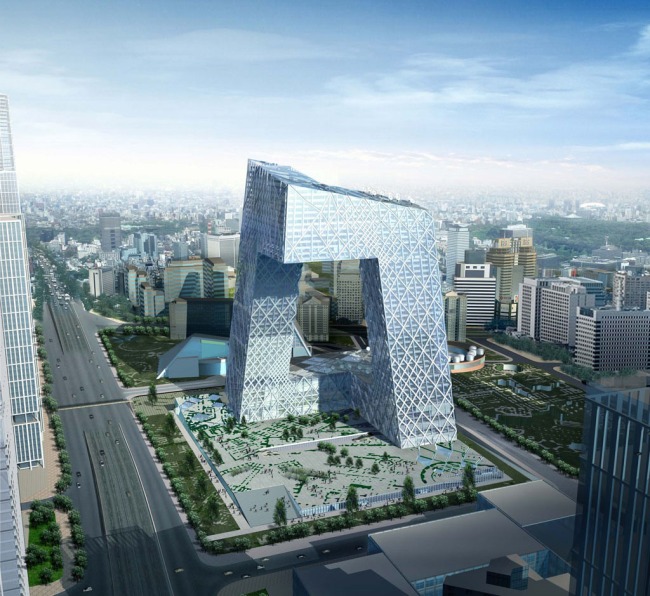
Following the form of Rem Koolhaas’ CCTV Building, we struggle to identify historical origin and cultural ownership.
Tesla believed our present cultural paradigm, seeing space travel as the future, our organism stemming from the radiation of the sun, limits our options in use of energy, a juxtaposition inducing limitless options from a change of perspective. A similar phenomenon can exist with architectural form; Sullivan wrote that “form ever follows function” which we can interpret as form should stem from the function of its materials, form should reflect its message and its use, and form, as culture, follows function, its use and message. Is the evolution of our form similarly restrictive? Culture as form is perceived individually and collectively, it is used, interpreted, and it works on and for its users and owners. Per Tesla’s difficulties with energy, we can begin thinking about our difficulties with human form and culture. Do we have culturally pluralistic forms, as possibly existed during the Baroque, today? Do we have diversity of form and culture? Do we have the physics to support these cultural paradigms per form follows the function of its materials, the correct laws explaining the correct lighting to match the correct building, the correct culture behind the correct physics to explain the correct ethos of the correct cultural mission for the correct building? Do we have diversity in form, culture, and science?
Finally, we can begin to think about our technology that we buy and use, our refrigerators, microwaves, televisions, and computers, which change our eyes and needs and reflect back to our architecture. Are we preparing ourselves for an exponentially complex future and its benefits to our individual and collective expression and understanding?
Incomplete documentation
Architectural projects in a design build environment are the hard work of people across trades and disciplines. The exact electrical light switch location may be the work of a 1 year apprentice electrician, measured precisely with tools and use in mind. Ultimately, we want the architect and owner to agree with every design decision. Yesterday, architects had much more control over materials used and means and methods. Today, we have design build firms like McCarthy and Clark Builders known for their talents in choice and application of materials.
Applying BIM on a design build project, we are ultimately looking at increasing accuracy of desired results, increasing communication, increasing knowledge of tools and materials required, and reducing the job schedule time. We are saving money on labor, materials, and equipment and using visual media to communicate across disciplines—builders, managers, clerks, designers, tradesmen, drafters, and administrators. Ultimately we are looking at saved money which may be used for higher priced materials, expanding the footprint or height of the building, more modern digital/electrical technology within the building, or cash profit, usually contradictory to long lasting design/build relationships and resultant capital.
When considering details, we need to be wary of turning the tradesman into a hired assembly man employed by Ikea. Certain decisions, the overall form and use of the building, needs to be signed off by architect and owner, the inner, outer and structural workings signed off by the engineers. Design decisions are made only when necessary; with use of modern BIM tools, take off schedules from design models align with day to day schedules align with financing, insured with collective sign off to ensure construction is on time, the design intention and engineering mission are reflected, and the client is happy that this building will suit their personal needs and decides to invest in the engineers’ and architects’ take on the future or present.
The steel union is trained in the particularities of welding and can be consultant to the structural engineer, signing off on individual details and having an allowed list of situations to leave to the field. The same goes for wiring methods for the electricians and installation methods for the fitters. At the end of the day, more voices are heard and more work is accomplished. The apprentice owns a piece of the intellectual property, he is a manager of his own take on the project, and the overall building is uncompromised per traditional specs and present requirements of meeting expectations of BIM prepared projects.
Ultimately, looking at a design build project where the design of the façade itself can be delayed until the end of construction or just before installation of windows, you have much more talent assigned to your project, much more intelligence for the architect and builder to use, the construction manager and owner to sign off on, and each individual contractor to take home and continue to develop throughout their careers.
While certain aspects of the documentation we leave incomplete, we need to continue developing modern documentation formats, modern drafting standards for time frame schedules and supplementing drawings, financial charts and supplementing drawings. Similarly, field details bridging to approved BIM coordinated drawings bridging to approved design drawings, supplemental drawings to take off tables for material order or fabrication, produced by architects, engineers, builders, contract management or labor, digitized or not. We need cohesion and immediacy which is presently counterintuitive in multi production(digital, traditional) and multi platform(Excel, Word, Revit) working environments.
Shared & amplified benefit from devotional subsidies
LEED certification can function as a devotional subsidy, giving green and future motivated companies incentive to offer development and design services without cost. Both participation in development and completion of a LEED certified project are great credentials for well funded sustainable and LEED projects in the future, and they increase value in multiple dimensions– fueling development of technology, research into sustainable practice, and increased value for the owner.
From this perspective, high-tech, solar, sustainable, and green building technologies amplify each other; a solar company doing work on a data center will have better credentials than a solar company doing work on a shopping mall. Similarly, networks of devotional subsidies and organizations from separate disciplines can amplify each other through hubs of common goals and overlapping needs. The client, depending on their business, also, may benefit from being part of these hubs.
With rapid development of solar and data technologies, it could be necessary to begin a contract with a proven hard bid contract, followed by a second open ended shared risk contract, followed by negotiation to install novel, co-developed and co-insured designs per successful completion and approval, or continued shared ownership of unfinished design for future projects.
This can also be applied to green building technologies. More importantly, on a design build contract, form can follow mission upon the client’s final approval of a novel, future oriented contract, or the preliminary hard bid contract. If we ask why we build medical hospitals, shopping malls, or residential complexes, despite overcoming shortage of structures, we also want different structures, in regard to form, function, technology, ethic, vision, and business relations. All of these should work cohesively upon completion. Architectural design can remain fluid with parts in draft until labor begins for each contract or subcontract.
Do we want more green roofs?
If green roofs can be seen, they are a constraint for architectural design. Either you acknowledge them or they become an afterthought.
Palomar is a consequence of fulfilling LEED requirements, blending with its rural site, and advocating and implementing a connection between nature and healing.
Is there a limit to benefit from increasing greenery in urban areas, an ideal ratio of concrete to plants to improve air quality? If not, we can give green walls and green roofs a serious thought as a permanent design element in all structures.
Visible greenery is a design constraint and a burden. If we want or need to live in green cities in the future, green roofs are progressive, if we want alternate means of achieving the same results as green roofs such as better insulation on rooftops and if possible, achieving ideal percentage of greenery per acre with public gardens, this is not what you want. You prioritize the green movement over ideal architecture.
Gardens on their own can be perfected for their environment. Segregating gardens from buildings can allow for fewer design constraints for both buildings and gardens, allowing for a more complete, intentional design.
Blenhelm Palace is an iconic example of British Baroque architecture. Its grounds are iconic of Japanese influence on British gardens.
Green roofs can be a type of loan, until we build more gardens, as a research subsidy or for air quality. It is better to apply them to existing buildings, possibly retrofitting roofs for higher parapets to not alter the visual appearance or color scheme, rather than to plan flat roofs with gardens in mind, or keep green visible as marketing for the movement and acknowledge these structures are temporary.
An idea I have not seen implemented yet is a parking structure garden. Parking structures are intended for the weight of many cars. A landscape architect could have 100,000 square feet to build a public garden with molded dirt, sand, choice of plants, benches, etc, and an entrance segregated from vehicles. These would increase the ratio of green to urban and allow for more ideal gardens, with more versatility in use and more benefits.
OMA’s design for Santa Monica Plaza, a mixed use complex, wishes to implement ideas of modular and stackable building. A problem which they may have solved is how to imply separation of space and place without sidewalks and ground plane separation. This could be a good idea for rooftop gardens, creating a hybrid of garden and commercial, residential, etc. building. If we are comfortable with form alone implying separation of identity and use, we can begin to consider stacking gardens on roofs.
